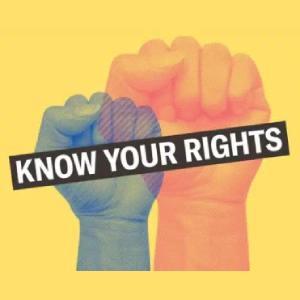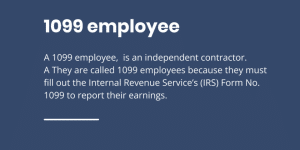Updated June 30, 2025
How to Win Your Wrongful Termination Lawsuit in California: A Legal Guide
Did you know that wrongful termination lawsuits in California have one of the highest success rates in the nation when properly prepared? Despite California being an at-will employment state, employees here have robust legal protections against unfair dismissal.
Losing your job unexpectedly can be devastating—affecting your finances, reputation, and emotional well-being. However, if your employer terminated you for illegal reasons, California law provides powerful remedies to help you seek justice. In fact, California offers some of the strongest worker protections in the country, with laws that often exceed federal standards.
Fortunately, winning your case is possible with the right approach. The key is understanding what actually constitutes wrongful termination, gathering compelling evidence, and following proper legal procedures. Many terminated employees make critical mistakes early in the process that significantly weaken their chances of success.
This guide will walk you through the essential steps to build a winning wrongful termination case in California—from identifying illegal firing practices to collecting crucial evidence and filing your claim correctly. We'll also explain what compensation you might be entitled to and how to maximize your chances of a favorable outcome.
Understand What Counts as Wrongful Termination
Navigating the complex terrain of California employment law begins with understanding the fundamental difference between legal termination and wrongful dismissal. Employers have considerable latitude in firing decisions, yet this power is not unlimited.
At-will employment vs. wrongful termination
California operates under the "at-will" employment doctrine, meaning either employers or employees can end the working relationship at any time. Essentially, your employer can terminate your employment for almost any reason—or for no stated reason whatsoever. Likewise, you can resign without providing justification.
This at-will presumption developed during the late 19th century when courts viewed the employer-employee relationship as being on equal footing in terms of bargaining power. Nevertheless, this doctrine has been significantly eroded since the 1980s through both statutory and common-law protections. As the Industrial Revolution progressed, the formation of unions and collective bargaining agreements frequently included provisions requiring just cause for adverse employment actions.
Although at-will employment remains the default in California, wrongful termination occurs specifically when an employer fires someone for reasons that violate the law. The crucial distinction is whether the termination breaches established legal protections rather than merely seeming unfair.
Common illegal reasons for firing
Several key categories of illegal termination exist under California law:
- Discrimination: Firing based on race, color, national origin, religion, sex, gender identity, sexual orientation, age (40+), disability, genetic information, veteran status, or citizenship status
- Retaliation: Terminating employees for reporting violations, filing complaints, testifying in proceedings, or refusing to engage in illegal activities
- Protected Activities: Firing workers for taking legally protected leave, serving on juries, or participating in unionization efforts
- Public Policy Violations: Dismissing employees for reasons that undermine fundamental public interests as expressed in constitutions, statutes, or regulations
- Contract Breaches: Terminating despite implied or explicit contractual protections
The erosion of the at-will doctrine accelerated during the 1960s with the introduction of federal legislative protections, including Title VII of the 1964 Civil Rights Act. Throughout, courts increasingly recognized the structural and economic advantages employers hold during employment negotiations.
When unfair is not unlawful
Not every unfair termination qualifies as wrongful under the law. Furthermore, employers can legally fire employees for reasons that may seem unjust but don't violate specific laws or protections.
For instance, your boss can terminate you because they dislike your personality, they're having a bad day, or they want to hire a friend instead. Additionally, they can fire you without providing advance notice or explanation in most circumstances.
Moreover, employers generally don't need to demonstrate an employee's wrongdoing to justify termination. They can dismiss workers over personality conflicts, misunderstandings, or even false accusations—provided these reasons don't mask illegal discrimination or retaliation.
Consequently, many terminated employees mistakenly believe they have legal claims simply because their firing seems unfair. Unless the termination violated specific legal protections, the courts typically won't intervene. An employer can legally fire someone without prior disciplinary actions or for subjective performance issues, even if the employee disagrees with the assessment.
The distinction between merely unfair termination and legally wrongful termination forms the critical foundation for determining whether you have grounds for a lawsuit under California law.
Know the Legal Grounds for a Lawsuit
To build a successful wrongful termination lawsuit in California, you must establish clear legal grounds. Having solid legal foundation is critical for any claim to survive scrutiny in court and potentially lead to compensation.
Discrimination based on protected characteristics
Filing a discrimination-based wrongful termination claim requires proving your employer fired you because of characteristics protected under law. California offers broader protections than federal standards, covering:
- Race, color, national origin, or ancestry
- Religion or religious practices
- Sex, gender identity, or sexual orientation
- Age (40 years and older)
- Disability (physical or mental)
- Medical conditions
- Genetic information
- Marital status
- Military or veteran status
- Political activities or affiliations
Notably, employers with mixed motivations can still be held liable if discrimination was a substantial factor in your termination, even if other legitimate reasons existed. The burden of proof shifts to your employer once you demonstrate discrimination was a contributing factor in your dismissal.
Retaliation for reporting violations
Retaliation occurs when an employer punishes you for exercising your legal rights. Under California law, employers cannot fire you for:
- Reporting workplace harassment or discrimination
- Filing wage and hour complaints
- Taking legally protected leave (medical, family, jury duty)
- Participating in investigations or legal proceedings
- Refusing to engage in illegal activities
California Labor Code Section 1102.5 specifically prohibits retaliation against employees who report suspected violations of laws or regulations. Therefore, if you were terminated after filing a complaint with HR about sexual harassment or reporting unsafe working conditions, you likely have grounds for a retaliation claim.
Whistleblower protections under California law
California provides robust whistleblower protections through multiple statutes. The California Whistleblower Protection Act (Government Code §8547) safeguards employees who report waste, fraud, violations of law, or threats to public health.
Labor Code §1102.5 further protects employees who disclose information about suspected illegal activity to government agencies, supervisors, or other employees with authority to investigate. First, this protection applies whether the reported violation concerns state or federal laws. Second, it covers internal reports, not just those made to outside agencies.
For health care workers, additional protections exist under Health and Safety Code §1278.5, which prevents retaliation for reporting patient safety concerns.
Violation of public policy or employment contract
Public policy violations occur when your termination contradicts fundamental societal interests expressed in laws or regulations. Common examples include being fired for:
- Refusing to commit an illegal act (such as falsifying reports)
- Performing a legal obligation (like serving on a jury)
- Exercising a statutory right (such as filing a workers' compensation claim)
- Reporting illegal conduct (whistleblowing)
In Shick v. Shirey, the court established that terminating an employee for filing a workers' compensation claim violates public policy, creating grounds for a lawsuit.
Contract violations provide another legal basis for wrongful termination claims. While California employment is primarily at-will, this presumption can be overcome by:
- Written contracts specifying termination terms
- Implied contracts created through longevity of employment, positive reviews, or verbal assurances
- Employee handbooks or policies limiting termination reasons
- Implied covenant of good faith and fair dealing
Each legal ground requires specific evidence and follows different procedural requirements. Accordingly, identifying the precise legal basis for your claim early is essential for following correct filing procedures and maximizing your chances of success.
Build a Strong Case with Evidence
Evidence serves as the foundation of successful wrongful termination lawsuits in California. Without compelling documentation, even the strongest legal claims may fail. According to employment experts, the success of your case often hinges on what you can prove, not just what you know happened.
Collect emails, texts, and performance reviews
Gathering written evidence creates a paper trail that can powerfully support your claim. As a matter of fact, documentary evidence typically carries more weight than verbal testimony alone. Focus on collecting:
- Employment records – Personnel files, pay stubs, and employment contracts provide baseline documentation of your relationship with your employer
- Performance evaluations – Positive reviews directly contradict terminations allegedly based on poor performance
- Digital communications – Save emails, text messages, and workplace chat logs that demonstrate discriminatory attitudes or retaliation
- Termination documentation – Keep all paperwork related to your dismissal, including severance agreements and explanations for your firing
Importantly, California law gives you the right to inspect and copy your personnel records. Request these documents promptly after termination, as employers are required to maintain terminated employees' personnel records for up to three years.
Document conversations and incidents
Verbal interactions often contain crucial evidence, yet they're easily forgotten or disputed. In particular, maintaining a detailed record of workplace incidents strengthens your case significantly:
- Record events contemporaneously, noting dates, times, and locations
- Document who was present during each incident
- Write verbatim quotes whenever possible
- Note your responses and any witnesses
- Store this information securely outside your workplace
By all means, check if your state allows recording conversations. California requires consent from all parties before recording, so written documentation may be your primary option.
Find witnesses who can support your claim
Witness testimony can powerfully corroborate your account and provide different perspectives on the same events. Undeniably, credible witnesses often make the difference in closely contested cases.
Look for colleagues who directly observed discrimination, harassment, or retaliation. Former employees may be especially valuable witnesses, given that they no longer fear workplace repercussions. Additionally, witnesses from different departments or management levels can demonstrate patterns of behavior throughout the organization.
When approaching potential witnesses, be transparent about your intentions without pressuring them. Certainly, some may hesitate to get involved, but others might share similar experiences and welcome the opportunity to speak out.
Till your case concludes, continue gathering evidence. In that case, maintain all documentation in a secure location outside your workplace, creating copies or backups when possible. Ultimately, the strength of your wrongful termination lawsuit depends on building a comprehensive collection of evidence that clearly demonstrates illegal employer actions.
File Your Claim the Right Way
Filing a wrongful termination lawsuit correctly requires navigating specific administrative channels first. Most cases cannot go directly to court, making it crucial to understand where and when to file your initial claim.
Where to file: CRD, EEOC, or Labor Commissioner
The appropriate filing venue depends on the nature of your wrongful termination:
California Civil Rights Department (CRD) – For discrimination claims based on protected characteristics like race, gender, age, disability, or sexual orientation. The CRD (formerly DFEH) handles violations of California's Fair Employment and Housing Act.
Equal Employment Opportunity Commission (EEOC) – For federal discrimination claims. When you file with either CRD or EEOC, your complaint is typically cross-filed with the other agency through a work-sharing agreement.
Labor Commissioner's Office – For wage disputes, retaliation for reporting labor violations, or whistleblower claims under California Labor Code.
For discrimination-based terminations, start with the CRD, as California law often provides stronger protections than federal statutes. Conversely, whistleblower claims frequently begin with the Labor Commissioner's Office.
Deadlines and statute of limitations
Missing deadlines can permanently forfeit your right to legal recourse, hence understanding time limits is essential:
Discrimination claims must be filed with the CRD within three years of the termination date.
For federal discrimination claims, EEOC complaints must be filed within 180 days, though this extends to 300 days in California.
Wrongful termination claims based on public policy violations have a two-year statute of limitations.
Whistleblower retaliation claims under Labor Code §1102.5 must be filed within three years.
For breach of written employment contracts, you have four years to file.
Upon receiving a "Right to Sue" notice from CRD or EEOC, you must file your lawsuit within one year or 90 days respectively.
What happens after you file
Initially, the agency reviews your complaint to determine jurisdiction. Once accepted, your employer receives notification within 10 days of filing. Subsequently, the investigation process begins, which may include:
- Document requests from both parties
- Witness interviews
- On-site visits in some cases
Investigations typically take approximately 10 months to complete, though mediation (if offered) can resolve cases in under three months. Throughout this period, you can access case information through online portals maintained by the agencies.
If the investigation finds no violation, you'll receive a "Right to Sue" notice. If evidence supports your claim, the agency may attempt settlement negotiations before issuing the notice. With this document in hand, you can proceed with filing your wrongful termination lawsuit in court.
Understand the Compensation You Can Win
Successful wrongful termination lawsuits in California offer substantial financial remedies alongside other important forms of relief. Understanding potential compensation helps set realistic expectations as you pursue your case.
Lost wages and benefits
The cornerstone of wrongful termination compensation is recovering economic losses. Courts typically award two types of wage damages:
Back pay covers all earnings from your termination date up to the court verdict, including salary, bonuses, and commissions you would have received. This amount gets adjusted for inflation and includes the value of lost benefits such as health insurance, retirement contributions, and other perks [1].
Front pay compensates for future earnings from the verdict date forward for as long as your job would reasonably have continued. Factors affecting this calculation include your age, work performance, intention to remain at the job, and the employer's business outlook [1].
Emotional distress and punitive damages
Beyond economic losses, California law recognizes the psychological impact of wrongful termination. Emotional distress damages compensate for mental anguish, anxiety, depression, sleep loss, and damaged relationships resulting from your termination [1].
Punitive damages may be awarded in cases involving especially egregious employer misconduct. These damages aim to punish employers and deter similar behavior. Courts only award punitive damages when employers acted with "oppression, fraud or malice" [1].
Importantly, federal law caps combined emotional distress and punitive damages based on employer size:
- $50,000 for employers with 15-100 employees
- $100,000 for 101-200 employees
- $200,000 for 201-500 employees
- $300,000 for over 500 employees [2]
Reinstatement or settlement options
Reinstatement returns you to your former position or a comparable one. Although historically resistant to ordering reinstatement, courts increasingly recognize its value when jobs offer unique advantages, prestige, or career development opportunities [3].
Ultimately, most wrongful termination cases resolve through settlements averaging between $30,000 and $300,000 depending on case strength, employer size, and damages involved [4]. Settlement negotiations typically weigh litigation risks against potential court awards.
In reality, settlement amounts vary substantially based on the nature of your termination, with discrimination and whistleblower cases often resulting in higher compensation than contract violation claims [5].
Taking Action Against Wrongful Termination
Navigating the complex process of wrongful termination claims requires thorough understanding, proper documentation, and timely action. California offers significant protections for employees, though success depends largely on your ability to recognize illegal termination, gather compelling evidence, and follow correct procedural requirements.
Remember that not every unfair dismissal qualifies as wrongful termination under the law. Your case must establish clear violations based on discrimination, retaliation, whistleblower status, public policy violations, or contract breaches. Evidence serves as the cornerstone of any successful claim, therefore collecting comprehensive documentation should become your immediate priority after termination.
Timing matters significantly throughout this process. Missing critical deadlines with the CRD, EEOC, or Labor Commissioner's Office can permanently forfeit your rights regardless of how strong your case might be. Additionally, seeking legal guidance early helps avoid common pitfalls that could undermine your claim's viability.
Successful wrongful termination lawsuits can result in substantial compensation, including back pay, front pay, emotional distress damages, and even punitive damages in cases of egregious employer misconduct. The potential for reinstatement or favorable settlements further enhances the value of pursuing justified claims.
Wrongful termination cases certainly challenge even the most resilient individuals. The financial strain, emotional toll, and uncertainty can feel overwhelming. Nevertheless, California's robust worker protections exist specifically to address these injustices and provide meaningful remedies.
Armed with the right knowledge and approach, you stand prepared to challenge illegal termination effectively. Your willingness to stand up against workplace injustice not only serves your individual interests but also strengthens workplace protections for all California employees. The path may prove demanding, yet the potential for justice and fair compensation makes pursuing legitimate wrongful termination claims undoubtedly worthwhile.
Consulting a wrongful termination attorney will provide you with the necessary guidance and support to navigate the legal process effectively. Remember, time is of the essence, so seek legal advice promptly to maximize your chances of a successful outcome.
Call Setyan Law at (213)-618-3655 for a consultation.







